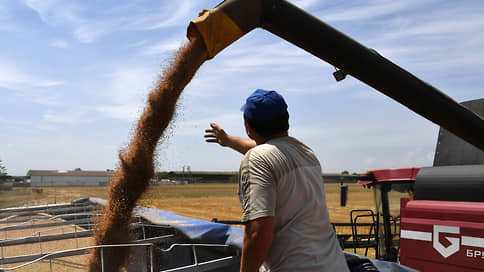The volume of world trade in 2022 increased by 11% due to higher prices
[ad_1]

The volume of world trade in 2022 increased markedly – by 11%, but most of this increase was caused by higher prices for energy resources, fertilizers and food, according to data from the World Trade Organization (WTO). In physical volumes, trade added less – only 2.7%. At the same time, by the end of 2022, the turnover dynamics turned out to be negative. In the EAEU last year, judging by the report on Eurasian integration published by the Russian government, there was an increase in both mutual trade – by 14%, and external supplies – by 9%.
World trade in goods last year grew by 11%, to $24.9 trillion, which significantly exceeds its volume before the pandemic (in 2019 – $18.5 trillion), according to WTO data. In terms of volume, deliveries increased much more modestly — by 2.7% against a growth of 9.4% in 2021. At the same time, in the fourth quarter of last year, there was a decline in turnover by 2.1% compared to the previous quarter. In the first quarter of 2023, the volume of trade also decreased by 0.3%. These different dynamics are explained by sharp spikes in prices for energy and fertilizers, as well as for grains and other foodstuffs.
China’s share as the world’s leading exporter fell from 15% to 14.4% last year, as did Germany’s share from 7.3% to 6.6%. At the same time, the US share increased from 7.9% to 8.3%. At the same time, China has sharply increased the export of cars and spare parts – for the year the increase was 30% (up to $121 billion). China still ranks only fifth in this indicator – after the EU, the USA, Japan and Mexico, but the gap with the last three countries is narrowing. In general, Europe and Asia trade mainly with countries in their regions, while North and South America, as well as Africa, with other regions, the WTO report notes.
The main change in the structure of world trade is a decrease in the share of manufactured goods and an increase in the supply of raw materials and fuel. The share of manufactured goods in the total turnover decreased to 63% against 69% in 2021, while the export of fuel and products of extractive industries increased to 21%, or $5.16 trillion (in 2019 it was 17%). The share of food in trade remained at the level of 10%. Among manufactured goods, the most popular categories are chemical products, office and telecom equipment, cars and spare parts. Against this background, world trade in intermediate goods is declining – in the last quarter of last year, it declined by 10%, which could be both a consequence of a cooling in the industry and a result of fragmentation of supplies.
The sharp increase in commodity prices last year also affected the dynamics of regional trade. Thus, in the CIS countries, the turnover in physical volumes decreased by 9.2%, while in money terms it increased by 1.2%. In other regions, the cost growth of turnover also outstripped the increase in supply volumes. The largest gap was in the Middle East (31% vs. 9.6%), in North America the volume of trade grew by 5.1% with an increase in money by 16.6%, in Europe – by 11.8% and 3.8 % respectively.
In the EAEU countries last year, there was also a rapid growth in trade, according to another report – on Eurasian integration, which was published the day before by the Russian government. Mutual trade between the “five” countries against the backdrop of sanctions and reorientation of trade flows increased from $73.1 billion in 2021 to $83.3 billion in 2022 (before the pandemic, the turnover was $61.5 billion). In total, counting from 2015, when the EAEU acquired its current form, the turnover of the union increased by 87%. Trade indicators, however, could also be influenced by changes in the exchange rates of national currencies – by the first quarter of this year, the share of payments in them, judging by the report, reached 89%.
The foreign trade of the union has grown by 59% since 2015, including 9% last year, from $846.4 billion to $922.9 billion. Imports decreased from a record $318.5 billion in 2021 to $284.6 billion in 2022, exports grew from $527.9 billion to a record $638.3 billion. For comparison: Russian exports, according to the Federal Customs Service, grew by 19.9% over the year to $591.5 billion, while imports decreased by 12% – up to $259 billion.
[ad_2]
Source link






